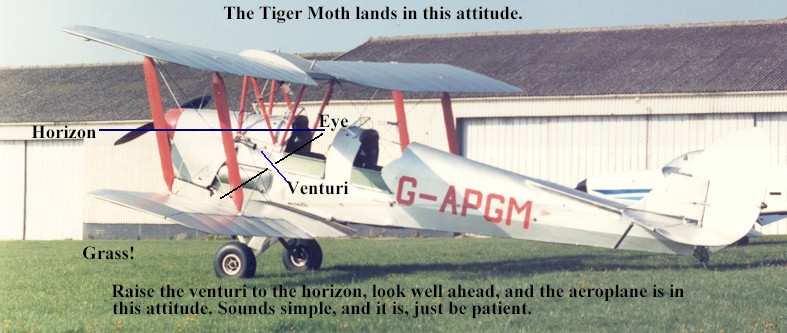http://www.avcanada.ca/forums2/viewtopi ... =3&t=40117
See my point above... Seating position is very important.
IMHO no-one can teach another person how to land and aeroplane

and yes you do have to learn how to do it yourself

But the instructor is there to demonstrate a good landing to you, to suggest where you should look, and how the approach should be made.
Landings are subjective though and people are different... If we were machines then we could be programmed like autoland systems and our landings would be just as good as those systems


 Fundamentals:
Fundamentals:
Make sure the aeroplane is trimmed.
I ask my students to let go of the controls on finals and I expect the aeroplane to continue the approach as before.
I don't want to see the nose suddenly pitch down!
The Cessna POH tells you how to land with the elevator cables disconnected

it's not that difficult.
There's a point of zero movement on the runway.
If there's no wind you should smack the ground at this point if you do nothing about it!
Before you smack the ground there's a sudden ground rush as you descend below 100 feet or so... It's an indication that you'd better do something like raise the nose gently... This is the flare.
The flare finishes with the aeroplane a few inches off the surface at which point you hold it off, and off, and off, and refuse to let the aeroplane land!
If the stall warning goes off (assuming it works!) and the wheels contact the ground gently, Michael is very happy... If you let the nosewheel plonk onto the ground you owe Michael $5.
Subjectiveness
Until the ground rush most of your attention is concentrated on the point of zero movement once the correct approach speed has been achieved and trimmed... This point is also your horizon!
Unless there's a lot of windshear, if the point of zero movement stays in the same position in the windscreen, like the attitude maintained with the horizon, the speed will look after itself.
You should be able to land the aeroplane without an airspeed indicator simply flying by attitude and power (Gravity).
In the last 200 feet you should not be looking at the airspeed indicator at all.
The ground rush is pretty obvious, you're going to crash if you don't do something!
Now we divide our eyes between 10:00 o'clock where the periferal vision is keeping track of our height above the ground, and 12 o'clock where we look to the end of the runway to stay straight...
Once we are happy with our hold off height we concentrate more on staying straight.
But what you see, and what the instructor sees may be different on the same approach! As long as the result's good, then all is well with the World.
Method
The club tends to try to teach students to land without flaps in the Cessna 152... Like an Aeronca Champ I was once told! The C152 is not a Champ!
The view is not as good flapless, speed control a little bit more difficult and then there's some instructors who insist on being at 70 in the C152 approach range of 60 to 70.
The POH suggests 20 degrees of flap for the approach with a broken elevator cable... There's good reason.
20 degrees flap at 55 to 60 knots is very stable, it's easy to maintain speed, you can see the whole picture, easily identify the point of zero movement, and the hold off is just long enough.
Flapless at 65 or more is a long hold off, too much float, too easy to get anxious and screw it up!
If I have a difficult student I use the soft field style approach, the C152 is very forgiving with a little power, and the student gains confidence.
Most of my students have soloed within 15 hours and are capable of doing all types of landings with flaps or no flaps...
I don't believe in not giving the students all the tools to execute good landings whatever madness is happening in the Boundary Bay circuit.







